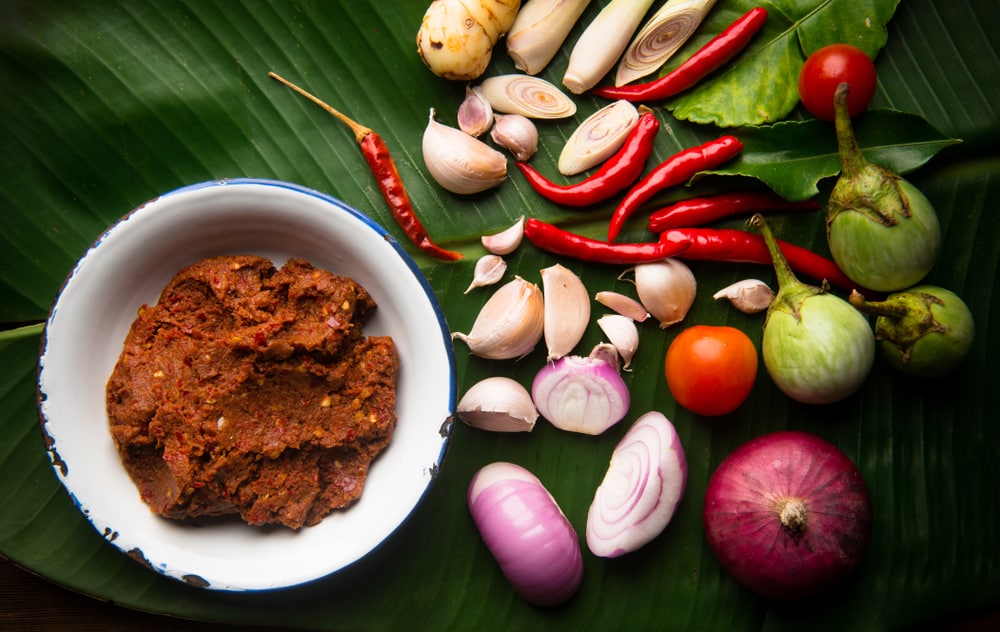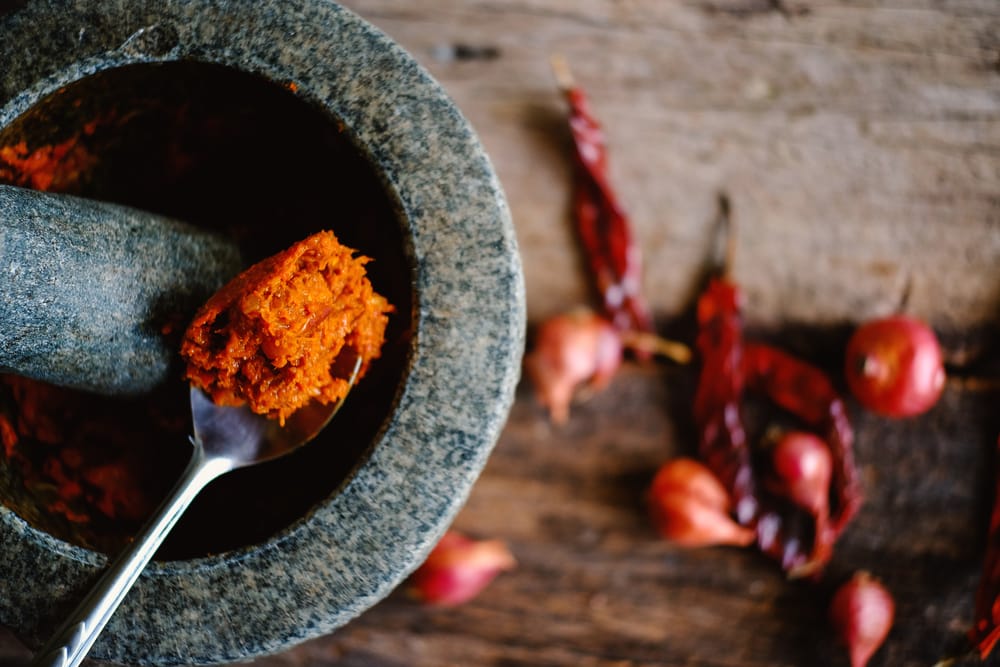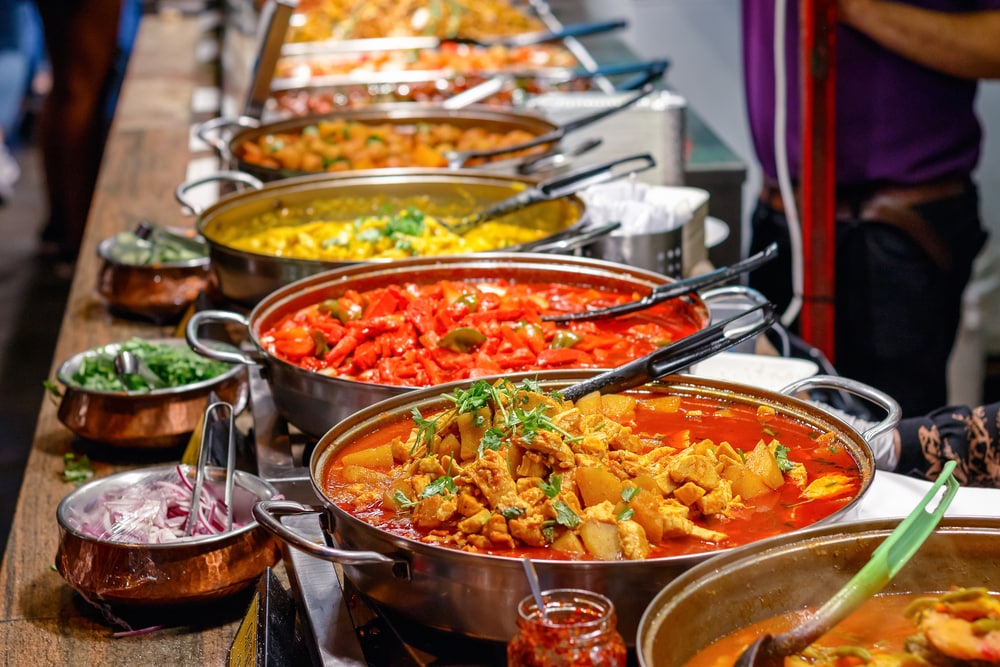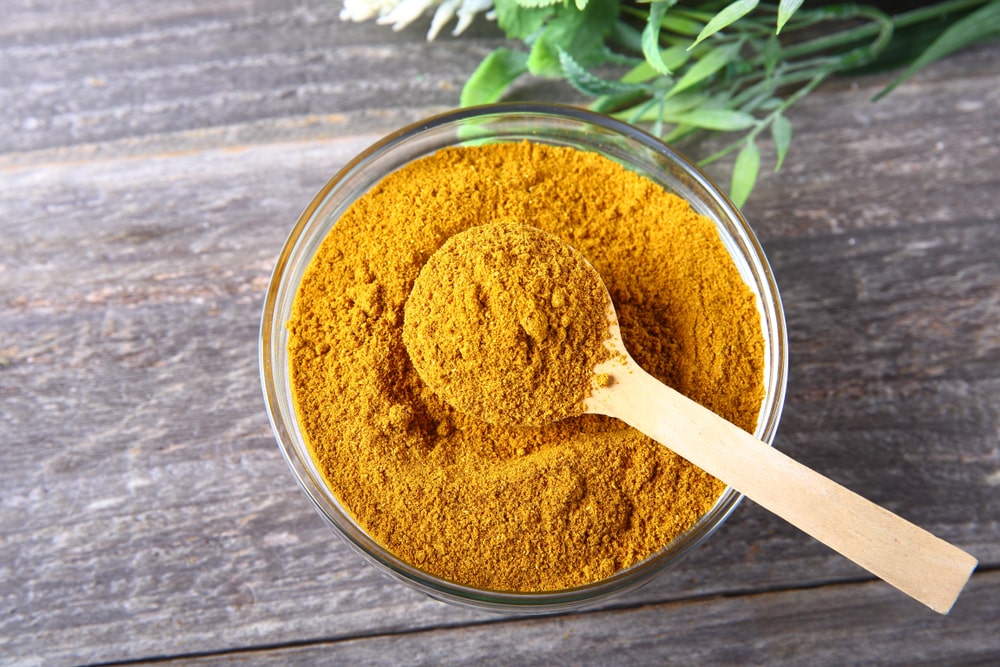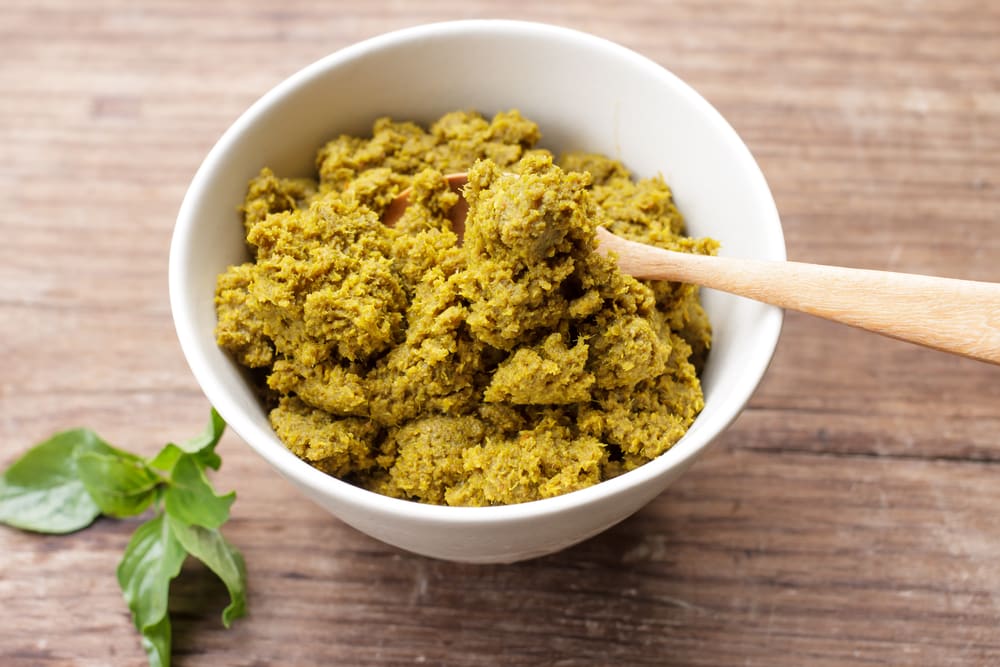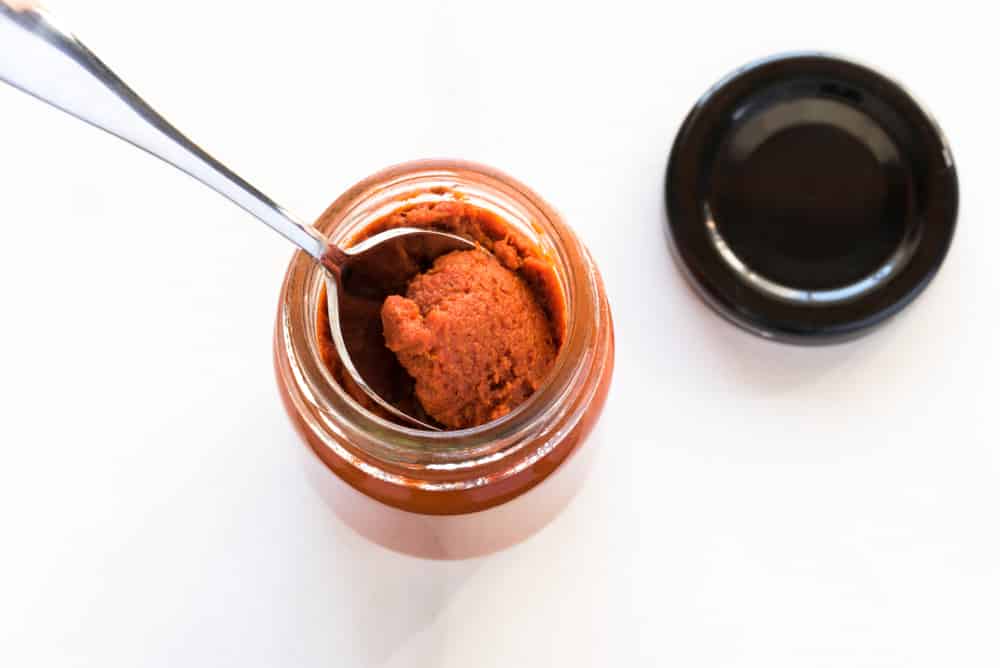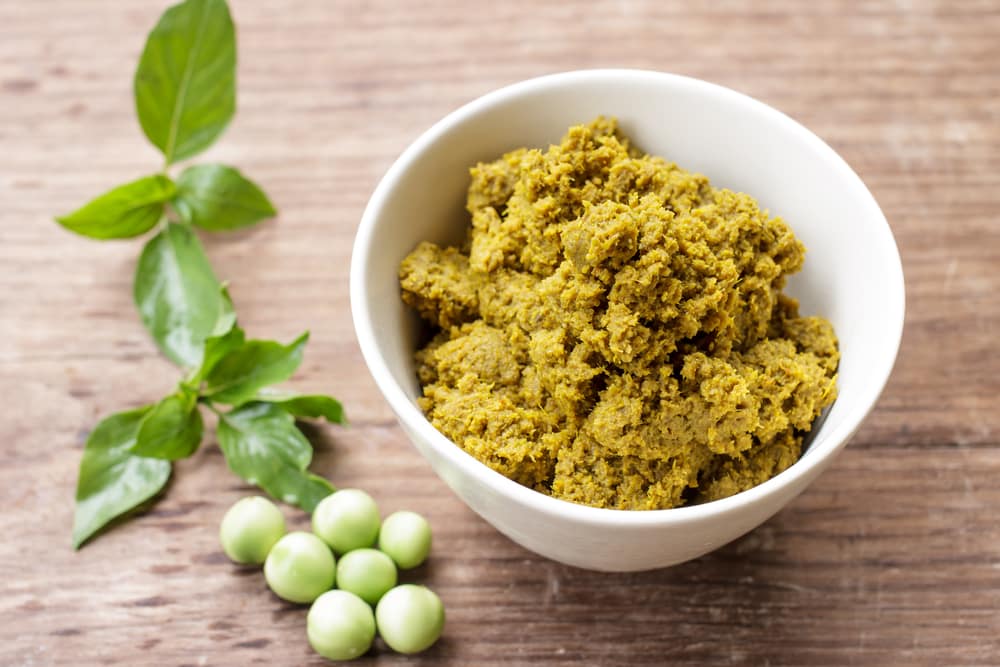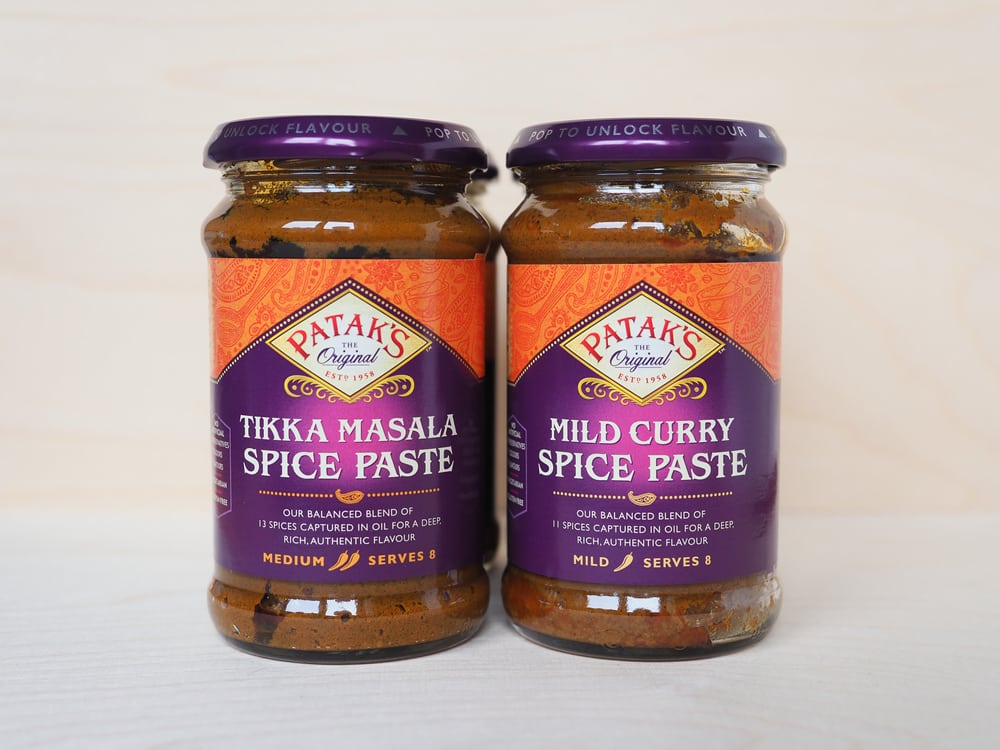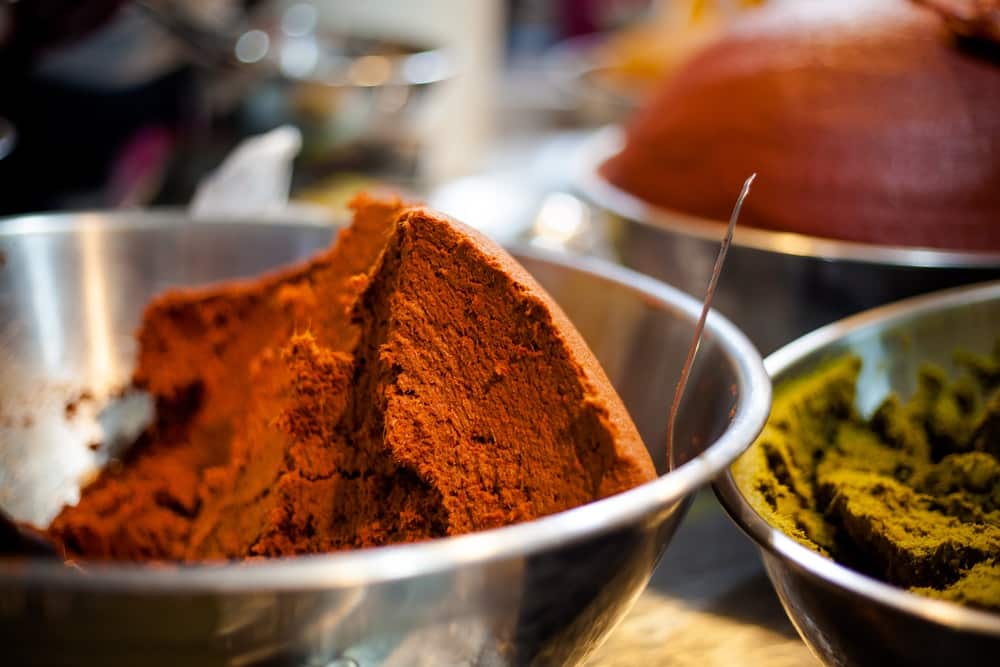
DISCLOSURE: This post may contain affiliate links, meaning when you click the links and make a purchase, I receive a commission. As an Amazon Associate I earn from qualifying purchases.
Curry pastes are a staple in any household in Asia and many other cultures across the world. Curry pastes serve to be the foundation of many well-loved dishes.
Since most curry pastes are slow-roasted and cooked with aromatics like turmeric, onions, garlic, thyme, ginger-garlic pastes, fenugreek seeds, cumin they have a bold, rich flavor.
Curry paste profiles may differ from within the provinces of large countries like India, China, and Pakistan.
They may also be different bases for different types of meat like beef, mutton, chicken, and fish, and entirely different for vegetables.
In South-East Asia, curry pastes add the spice factor to umami-flavored dishes. Ask any grandma in any Asian household, and she will have her own curated version of curry paste passing through the generations.
All in all, curry pastes are fundamental components of most cuisines and come in a manner of flavors, consistencies, and palates. There is a misconception in the West that curry pastes are solely spicy.
[amazon box=”B000LKVSDM”]
This is not true, because while some curry pastes combine spicy chilies as the main component, most draw from earthy, tangy, and warmer flavors instead of particularly spicy ones.
If you have run out of your supermarket jar of curry paste and still want to have a delectable curry simmering away at the stove-top, these alternatives can really help.
Moreover, your palate and pantry will be opened to many wonderful flavors you haven’t had the opportunity to try before.
Substitute For Red Curry Paste
1. Make your Own Red Curry Paste
Contrary to what people think, making your own curry past takes no time at all and is also very easy.
Other than that, you should also consider that store-bought curry pastes may be unhealthy because of elements like tartaric acid, preservatives, and even food color added to enhance the color and store the paste for longer.
However, you can make a healthy, fresh version of curry paste at home easily.
Store-bought curries also bring you limited options and brands but making your own curry pastes can be experimental, and you can try different flavors from all over the world.
This particular curry paste is similar to a regular red curry paste, and you can combine it with beef, chicken, seafood, and vegetables. It can also be used as a sauce for pasta, noodles, and soups.
This particular recipe is more on the spicier side, but you can adjust it as per your preference. Switch out the quantities and types of chilies to cater to your palate.
For the curry paste to be vegan, you can simply switch out the shrimp sauce with golden mountain sauce or something similar.
The ingredients are garlic and ginger paste, turmeric, onion, sea salt, red chili peppers, lemongrass paste, shrimp paste, tomato paste, chili powder, black and white pepper.
This recipe works best with Thai peppers, but you can substitute Korean and Indian peppers with it too.
2. Curry Powder
Powders are on average more concentrated in flavor than curry pastes.
You can easily find curry powders (although Indians may argue that there is no such thing in a singular curry powder base, and they are quite right!), which you can add to fried onion, tomato, and ginger-garlic pastes to create a sauce base for your dishes.
Biryani powders, green curry powders, most chicken curry bases are available in your local Asian department stores.
Measure out your powder carefully, because they are usually sharper in flavors and you need a small quantity to add flavor and aromas to your dish.
The moisture content in pastes is obviously higher, and so powders have a different flavor profile.
3. Yellow and Green Curry Pastes
While turmeric, ginger garlic paste, onion, and spices curry paste may be iconic across all cuisines, you can find a plethora of other types of curry pastes.
Yellow curry pastes, for example, are delicious and earthy, milder with onions, turmeric, and citrusy peppers in the combination.
Green curry pastes are created with really sharp green chilies, mint, and coriander and can spice-up chicken in a very refreshing way. They have a sharper, refreshing taste that will leave your mouth tingling for a long time.
Indian brown curry pastes are created with an earthy flavor of cinnamon, turmeric, caramelized onions and are glorious with lentils and beef.
Other Alternatives that Can Work Just As Well
If you want to experiment with your food and try something new, you can choose any of these other alternatives which could also work quite well.
- Jarred Red Curry Paste
Jarred red curry pastes usually have harmful preservatives and a good sprinkling of food color. If you are wondering about the bitterness in your curry, it comes from the food color added in the store-bought paste to make it appear a vivid red.
Buying fresh gochujang paste, or creating your own curry paste with fresh red Thai chilies and other organic ingredients is really what makes a curry paste delicious.
However, you can improve the taste of store-bought curry paste by following a few simple steps. Add the paste into ginger and garlic paste, sesame oil, and lemongrass, mix it well and add it to your curry.
- Make your Own Concoction
If you have guests coming over and have just discovered that your curry paste jar has finished, and running to the stores is simply not an option, this quick fix can be a great option.
While creating curry pastes takes time to stew and really develop that flavor, this quick fix has the subtle taste of the major flavor profiles. Blend chopped ginger root, lemongrass, garlic cloves, yellow onions, or shallots into a paste.
You can blend them in a food processor or blender. Add store-bought chili paste or fresh dried chilies as you prefer. Adjust the spiciness by adding fish or shrimp sauce, or flaky sea salt in your final dish.
This works very well with most curries that require curry paste as a foundation.
- Stew, Simmer, Store
If you are in no rush, and are in the pickling, storing, and sorting frame of mind, making curry paste in a big batch to be used later as per need is a great alternative to store-bought red curry.
Kafir lime leaf, ginger, yellow or red onions, garlic paste, lemongrass- you know the drill. Grind them into a fine paste; add fish sauce, and sesame oil.
These ingredients are easily available at any grocery and with the due procedure will give your curry paste an incredible flavor. According to your own spice tolerance, add whatever type of red, green, or yellow chilies you want.
Whole spicy red chilies are the tradition with this curry paste, but if you are not accustomed to handling this much spice, paprika or white pepper taste just as good.
You can add cilantro, lemon and lime juice, coriander, and cumin seeds for an even fresher, cleansing taste in your curry paste.
- A Quick Fix
Sometimes ingredients are not readily available or your curry sauce options aren’t vegan. In cases such as these, using soy sauce, or a lemon juice and salt mixture can lay a great alternative for shrimp paste or fish sauce.
Dried fenugreek leaves or kafir lime leaves can sound too fancy and may not always be available at the supermarket. Instead of those, regular lemon leaves or lemon zest can work just as well for your curry paste.
Once grounded and in paste form, store your curry paste in a jar or in wax paper if you want to use it frequently.
In case you have made a huge batch and want to store it for several months, freezing small curry balls until solid and keeping them in the freezer preserves the flavor.
- Green Thai Curry Paste
Eating red curry paste as a base for most curries in Asian cuisine can get tedious. To freshen up your palate, make Thai green curry paste.
Kaffir lime can be found dried and fresh alike in most Thai general stores and Asian supermarkets.
The green curry with coriander and citrusy flavors is a wonderful base for most fish curries. Turmeric and lemongrass proportions also made a tasty, milder Thai yellow curry paste that you can use for lentils and vegetables.
- Indian Curry Paste
Tikka masala powders and pastes, distinctive korma curry pastes, or general Indian curry pastes are as varied as the cultures within India.
Following Indian recipes can lead you towards many types of curry pastes, ranging from earthy, sweet, and tangy flavors from South India to spicy and warm flavors of North Indian curry pastes.
Madrasi curry pastes are milder, and pastes like Vindaloo can end up burning your tongue off with their spice.
Conclusion
While there is nothing as good as homemade curry paste as the foundation for the best curry, you can find alternatives to jarred red curry paste in powders and other types of pastes.
Experimenting and sampling different recipes and jarred pastes may be the best route to take before you serve a curry that is to your liking.
